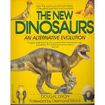Speculative biology, or speculative evolution, is a term that refers to a very hypothetical field of science that makes predictions and hypotheses on the evolution of life in a wide variety of scenarios and is also a form of fiction to an extent. It uses scientific principles and laws and applies them to a "what if" question (for instance: "What if Homo sapiens never evolved?"). Since one cannot make a definite prediction of what would happen as a result of any "what if" questions, this topic uses a great amount of fiction and creativity to create a speculative world. As in alternative history, there is generally a point of divergence. The point of divergence is the key change between our history and that of the alternative history. For example, a point of divergence for the "what if" question mentioned earlier would be 195 thousand years ago when humans first appeared, but in the alternative world our species would not evolve. In "future worlds", the point of divergence would actually be the present. In the case of the natural history of an extraterrestrial planet, a point of divergence would not essentially exist. The main fields within speculative biology as well as those related to the topic can be found to the right.
Etymology[]
The term "speculative biology" originates from Dougal Dixon[1], a Scottish geologist and author of books on palaeontology and speculative biology. It is the term he uses to refer to the topics of several of his books: After Man: A Zoology of the Future (1981), The New Dinosaurs: An Alternative Evolution (1988), Man After Man: An Anthropology of the Future (1990), and The Future is Wild (2003). Other terms that are used to refer to this field include speculative evolution, speculative zoology, alternative evolution, alternative biology, and hypothetical evolution.
History of speculative biology[]
The first book to technically take on the "what if" question so commonly asked in speculative biology was After Man, published in 1981. This book takes a look at what life might be like about 50 million years in the future in a world where man has been extinct for millenia[2]. Although many of the ideas proposed in his book are no longer considered by most to be logical (for example, the infamous brachiating feline), Dougal Dixon is often credited with the foundation of speculative biology as well as inspiring many others to take an interest in the subject. The New Dinosaurs, Man After Man, and The Future is Wild also relate to this topic and build up interest in the field by introducing even more odd and sometimes even wild scenarios.
Peter Ward is the second person to publish their speculative ideas into a book with his Future Evolution (2001). This paleontologist's work differs in several major ways from that of Dougal Dixon. First of all, he believes that humans will exist for a very long time and that their impact will help shape the evolution of the future species of Earth. For millions of years, the human population has increased causing a 10-million-year extinction event. He selects a number of animals that are "champion speciators", those that have the genetic ability to create new species quickly in response to hard times. Some of these species include rodents, snakes[1], crows, and dandelions[3].
The Future is Wild[]

The carakiller was featured on the television special, The Future is Wild.
A television documentary on the Discovery Channel, The Future is Wild has helped inspire a new wave of fans for "speculative biology". It aired in 2003 and took viewers five, one hundred, and two hundred million years in the future through the "eyes" of a space probe sent to Earth by humanity (after humanity left Earth). The series seems to have inherited the creativity of Dougal Dixon with such creatures as the spink and gannetwhale[4]. However, Dougal Dixon was not the only contributor to the project. The entire program was a result of a team of scientists and producers.[5]





